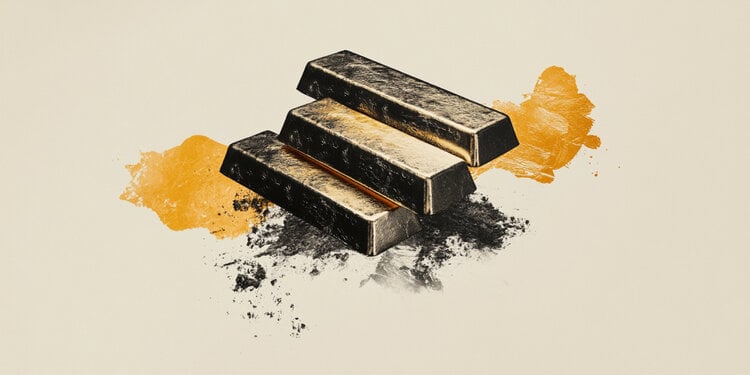US President Donald Trump’s global reciprocal kick in on Wednesday, fuelling a fresh risk-aversion wave across the financial markets, spiking up the demand for the traditional safe haven Gold. China is hit hardest with 104% tariffs by the US, heighening US-Sino trade tensions.
Against this backdtop, Gold price in India tracked its Comex peer higher on Wednesday.
At the press time, Gold price is advancing to 8,397.62 Indian Rupees (INR) per gram, following Tuesday’s close of INR 8,301.88, according to data compiled by FXStreet.
Gold price is trading at INR 97,944.14 per tola versus INR 96,831.53 per tola a day earlier.
| Unit measure | Gold Price in INR |
|---|---|
| 1 Gram | 8,397.62 |
| 10 Grams | 83,972.23 |
| Tola | 97,944.14 |
| Troy Ounce | 261,194.40 |
Global Market Movers: Gold price is underpinned by US tariffs-inspired global flight to safety
- The White House press secretary Karoline Leavitt confirmed that the US will proceed with a sweeping 104% tariff on Chinese imports starting this Wednesday. This continues to fuel worries that an all-out trade war would push the global economy into recession, which triggers a fresh wave of the risk-aversion trade and revives demand for the safe-haven Gold price.
- Investors ramped up their bets that a tariffs-driven US economic slowdown could force the Federal Reserve (Fed) to resume its rate-cutting cycle soon. In fact, the CME Group’s FedWatch Tool suggests that traders are pricing in over a 60% chance that the Fed will lower borrowing costs in May. Moreover, the US central bank is expected to deliver five rate cuts in 2025.
- This, in turn, drags the US Dollar lower for the second straight day despite the overnight hawkish comments from Fed officials. In fact, San Francisco Fed President Mary Daly said on Tuesday that the policy is in a very good place and modestly restrictive. Daly further noted that inflation pressure from widespread tariffs is an increasing concern.
- Separately, Chicago Fed President Austan Goolsbee said that US tariffs are way bigger than anticipated and pose a real risk to US importers who have very few fallback options. The relationship of sentiment to spending isn’t as strong as before and It’s not obvious how the Fed would react to negative supply shock, Goolsbee added further.
- Investors now look forward to the release of minutes from the Fed’s last policy meeting. Apart from this, the US Consumer Price Index (CPI) and the Producer Price Index (PPI) on Thursday and Friday, respectively, will be scrutinized for cues about the Fed’s policy path. This, in turn, will drive the USD in the near term and influence the XAU/USD pair.
FXStreet calculates Gold prices in India by adapting international prices (USD/INR) to the local currency and measurement units. Prices are updated daily based on the market rates taken at the time of publication. Prices are just for reference and local rates could diverge slightly.
Gold FAQs
Gold has played a key role in human’s history as it has been widely used as a store of value and medium of exchange. Currently, apart from its shine and usage for jewelry, the precious metal is widely seen as a safe-haven asset, meaning that it is considered a good investment during turbulent times. Gold is also widely seen as a hedge against inflation and against depreciating currencies as it doesn’t rely on any specific issuer or government.
Central banks are the biggest Gold holders. In their aim to support their currencies in turbulent times, central banks tend to diversify their reserves and buy Gold to improve the perceived strength of the economy and the currency. High Gold reserves can be a source of trust for a country’s solvency. Central banks added 1,136 tonnes of Gold worth around $70 billion to their reserves in 2022, according to data from the World Gold Council. This is the highest yearly purchase since records began. Central banks from emerging economies such as China, India and Turkey are quickly increasing their Gold reserves.
Gold has an inverse correlation with the US Dollar and US Treasuries, which are both major reserve and safe-haven assets. When the Dollar depreciates, Gold tends to rise, enabling investors and central banks to diversify their assets in turbulent times. Gold is also inversely correlated with risk assets. A rally in the stock market tends to weaken Gold price, while sell-offs in riskier markets tend to favor the precious metal.
The price can move due to a wide range of factors. Geopolitical instability or fears of a deep recession can quickly make Gold price escalate due to its safe-haven status. As a yield-less asset, Gold tends to rise with lower interest rates, while higher cost of money usually weighs down on the yellow metal. Still, most moves depend on how the US Dollar (USD) behaves as the asset is priced in dollars (XAU/USD). A strong Dollar tends to keep the price of Gold controlled, whereas a weaker Dollar is likely to push Gold prices up.
(An automation tool was used in creating this post.)

